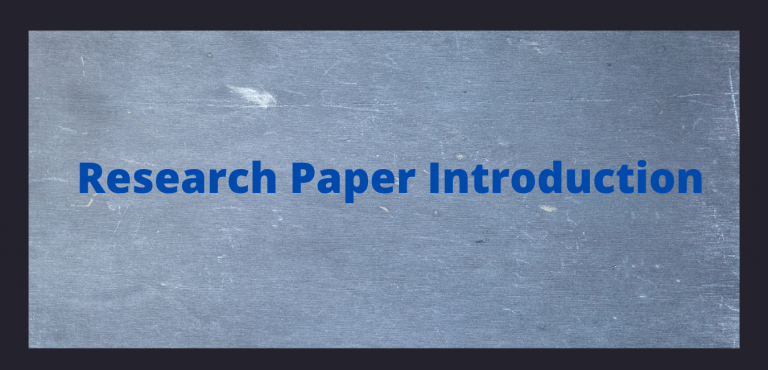Footnote Abbreviations
Footnotes are a great way to provide supporting information without interrupting the flow of the text.
Footnotes also allow you to put in all sorts of goodies that might not fit into your main body, including:
- A quote from another source.
- A historical reference or clarification for unexpected results or otherwise
- An opinion from someone not directly involved in your research.
- Quotes from outside sources with direct relevance to what you’re writing discussing.
The most basic type of footnote is the number in superscript. Some journals, however, use symbols or letters instead of numbers in superscript, such as using asterisks, daggers, and double dagger symbols. There are many abbreviations in the Chicago manual of style that you can use for your papers.
Common Footnote Abbreviations
An abbreviation is a shortened version of a word or phrase.
Below are some common abbreviations used in footnotes:
General abbreviations
- et seq- (lit. ‘and the following’ or ‘and so forth’)
- op cit- (same as above)
- viz- (same as above)
- e.g.- (exempli gratia. lit. for example). It means, ‘for the sake of an example
- i.e.- (that is)
- rev.- (revised)
- n.d.- (no date)
- q.v./ quod vide/ -see another place.
- q.v. infra/ quod vide infra / which means “see below”
- ibidem- (same as above)
- exempli gratia/ e.g.- (for example)
- etc.- (etcetera/and others)
- para.-/ v.i./ vide infra- (lit. ‘see below’)
- supra- (above)
- anon.-anonymous
- c. or ac. (circa)-around a certain date. e.g. c. 2020 (around 2020)
- chs. or ch. -chapters or chapter
- ante. -before
- div. -division
- eds. or ed. -editor, edition, edited by. (Depends on the context)
- cf. -short form for conferatur/confer, which means to compare for context or reference
- ff or j. -following page /pages
- ll. or l. -lines or line
- app.- appendix
- n.p. -no place of publication
- mss, ms-manuscripts, manuscript
- sec.-section
- pp. or p.- pages or page
- vols. or vol. -volumes or volume
- tr. or trans. -translated
- pt. -part
- id. (idem) -the same
- Sop.: sub silentio -(lie under silence)
- S.v. or sub voce- (stare voco) under the term
- ad infinitum -forever
- ant. -anti-, against, opposed to. e.g. anti-vaccinationist
- bibl.- (bibliographical) book
Citation abbreviations
A citation rule is that when an item is cited the first time, the writer uses its full citation. However, for the same item in subsequent citations, abbreviations are used. Examples of citation short forms are:
- ibid- (lit. ‘the same source’)
- passim- (a Latin term meaning ‘throughout’)
- et al.- (lit. ‘and others’). Used when there’re multiple authors for the same work
- loc cit- loco citato(lit. ‘the place cited’)
- op. cit- (citato loco) in work cited. References to the same source.
A few of the footnote abbreviations listed here, such as ibid., op. cit., and loc. cit. are often used in literature to indicate that you’re using the same source as before. If there are no page numbers for this source, then these abbreviations can be used.
Different Footnote Categories
Paragraph
Paragraph footnotes appear at the bottom of the same page and continue on the next page.
Endnote
An endnote footnote has its reference and will not continue at the bottom of the next page.
Cite within a footnote
It is done when the writer wants to refer to the same source again but don’t want it to be a part of the same footnote.
Problems That Can Arise from Footnotes
- Being too wordy and not concise enough
- Not following your guidelines for what you want in a footnote.
- Being unclear to readers
- Making your writing too long and hard to follow
Why are Abbreviations Important?
The use of abbreviations has a special place in writing. The following are some reasons why writers sometimes use abbreviations instead of complete English phrases:
- To save on time. It takes a lot less time to write an abbreviation as opposed to the complete word or phrase.
- Achieve a heavy yet brief packaging. An abbreviation is a small package packed with meaning. The writer takes less energy and time to unpack as long as they understand the abbreviation’s meaning.
- To sound sophisticated. Abbreviations give papers a scholarly and sophisticated look. Writing complete phrases throughout depicts over-simplicity that doesn’t appeal to a certain audience level, especially scholars.
- Hide the meaning of a word. Abbreviations are used to hide some words that can be misconstrued or offensive if read in full. For example, if you write the acronym MRM, it can be turned into a phrase that’s derogatory to women when read in full: misogynistic radfem men’s rights movement.
- To take care of slang terms. Abbreviations are used to replace words that express slang or casual tone. This gives the reader a different feel when reading your writing.
- Make writing easy. Abbreviations are easier to write in comparison to complete phrases. The writer has less energy when using abbreviations instead of full English phrases, especially when it’s a long paper.
- To show authority. A writer uses abbreviations to sound authoritative and demonstrate expertise in the subject. Abbreviations are good when the writer uses them correctly.
Take Away
Footnote abbreviations are just as important and common as footnotes themselves. Knowing the most commonly used abbreviations and their meanings is essential for ensuring that readers fully comprehend your writing.
To make the most out of abbreviations, ensure that you’re using them correctly. For example, op. cit., ibid., and loc. cit are abbreviations that can be used interchangeably in some circumstances.


I‘m a freelance content and SEO writer with a passion for finding the perfect combination of words to capture attention and express a message. I create catchy, SEO-friendly content for websites, blogs, articles, and social media. My experience spans many industries, including health and wellness, technology, education, business, and lifestyle. My clients appreciate my ability to craft compelling stories that engage their target audience, but also help to improve their website’s search engine rankings. I’m also an avid learner and stay up to date on the latest SEO trends. I enjoy exploring new places and reading up on the latest marketing and SEO strategies in my free time.






